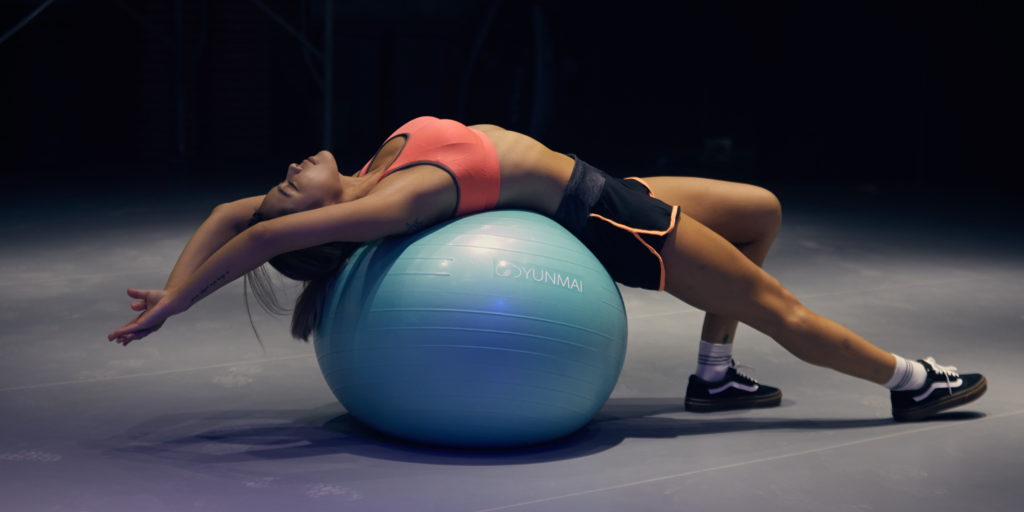Arthrose
What is osteoarthritis?
Osteoarthritis is a degenerative disease of the joint cartilage. The cartilage is worn down due to various causes. In an advanced state, the cartilage can even be completely destroyed. Cartilage injuries or one-sided strain, for example due to misalignment, incorrect posture or accidents, can disrupt the microscopic structure of the cartilage tissue. This can lead to osteoarthritis in the long term. Like all connective tissue, joint cartilage is subject to natural ageing. However, even young people or, in rare cases, even children can suffer from osteoarthritis.
What is the function of healthy cartilage?

Buffer function
Cartilage forms the “buffer zone”, so to speak, between the bones in the joints. Compared to the bones, cartilage tissue is rather soft but extremely elastic and can withstand the greatest loads when healthy. Cartilage tissue is highly water-binding and is saturated and nourished by synovial fluid (synovial fluid). The elasticity of the joint cartilage is created by this water binding. The very low friction values on the surface of the cartilage are caused by the film of fluid that every load produces on the surface by compressing the cartilage tissue.
Like a sponge
As the cartilage is not supplied with blood, it has to absorb the necessary nutrients from the surrounding synovial fluid. You can imagine this as being like a sponge: Every time the joint is loaded and the cartilage is thus compressed, all the waste products are squeezed out of it. Although this results in a slight, biologically normal abrasion, this is regenerated by the healthy body. When the joint is relieved, the cartilage fills up again with synovial fluid and absorbs new nutrients. The fluid exchange and metabolism that are important for regeneration therefore require the pumping effect of regular, gentle movements.
This explains why movement is so important for our joints! Joints are made for movement and movement is needed to maintain joint health!
Which joints are affected?

Most commonly affected joints
Osteoarthritis can basically affect all joints. The best known are probably osteoarthritis of the knee (gonarthrosis) or osteoarthritis of the hip (coxarthrosis). However, there is also spinal arthrosis (facet joint arthrosis), shoulder arthrosis (omarthrosis), finger joint arthrosis (Heberden’s arthrosis), ankle joint arthrosis and toe arthrosis.
How does osteoarthritis manifest itself?
Regardless of the specific cause, osteoarthritis begins with cartilage tears and the resulting increased friction in the joint, which leads to increased wear and tear. At the end of the osteoarthritis process, cartilage-free bone surfaces rub directly against each other. You can imagine that this can lead to severe pain, especially in the advanced stages. It often leads to inflammation, which in turn is painful. The initial pain is characteristic of osteoarthritis. Pain can occur in the morning or during the first movement, which soon subsides. Another characteristic arthrosis pain is pain on exertion: it occurs when a joint is momentarily overloaded. Stiffness in the affected joint in the morning after getting up is also typical.
How can osteoarthritis be treated?
Painkillers and operations
Painkillers and anti-inflammatory painkillers, so-called non-steroidal anti-inflammatory drugs (NSAIDs), are often used. There is also infiltration, in which cortisone or a mixture of cortisone and painkillers is injected directly into the joint. Cleaning of the joint capsule by arthroscopy is also very often used. Partial or full prostheses can be used surgically. Prosthesis operations are particularly common for the large joints, the hip joint and the knee joint. However, pain medication is often not effective enough and has considerable side effects. The other therapies mentioned are invasive and therefore involve risks.

Exercise therapy
Of course, exercise therapy is always recommended in addition to all these treatment methods. Here, too, there are various options (e.g. physiotherapy). The prevailing opinion is that targeted exercise and good training of the surrounding muscles relieves the joints. The better the muscles hold the joints together, the better the joint function is supported and the cartilage is relieved. Opposing voices are becoming louder that the reason for wear and tear is rather inflexible muscles and fasciae, which are caused by our one-sided movement patterns and can build up enormous pressure on the joints. It is well known that we only use a small percentage of all the movements our bodies are designed for!

Are there alternative forms of treatment?
Muscle stretching
As mentioned above, “shortened”, unyielding muscles and fascia could be the cause of osteoarthritis. If this is the case, the first step would be to consistently perform special daily stretching exercises to ensure that the muscles and fasciae become more flexible again so that the joint space can widen and the cartilage can regenerate. But can cartilage recover at all? Once the cartilage has been worn away, the conventional wisdom is that the only option is to delay further joint wear and tear, as the body cannot rebuild the joint cartilage. But is this really true? Can the body really not regenerate joint cartilage? Is wear and tear and therefore osteoarthritis incurable?

Special vital substances
Doctors specialising in vital substances disagree. They believe that a combination of methylsulfonylmethane, glucosamine and chondroitin should be able to improve osteoarthritis in many cases. This is because these endogenous substances stimulate cartilage formation. However, it takes a lot of patience and the first improvements can only be expected after several months.

Exercise and diet
As already mentioned, regular gentle exercise lubricates and nourishes the joints with synovial fluid, so to speak. Optimal nutrition is also important in order to provide the cartilage with the nutrients it needs to regenerate. This is primarily ensured by a balanced and healthy diet. For example, pay attention to anti-inflammatory foods, such as those that contain a lot of omega-3 fatty acids. A sufficient supply of vitamin D should also be ensured. However, as we are increasingly struggling with an undersupply of many important nutrients these days, it can be useful in certain cases to take selected nutritional supplements in addition. So if you do the special stretching exercises regularly, exercise often and purposefully (e.g. cycling or swimming), eat a balanced diet and take in important vital nutrients, you have a chance of being able to lead a life again without osteoarthritis symptoms and excessive wear and tear on cartilage and joints.

